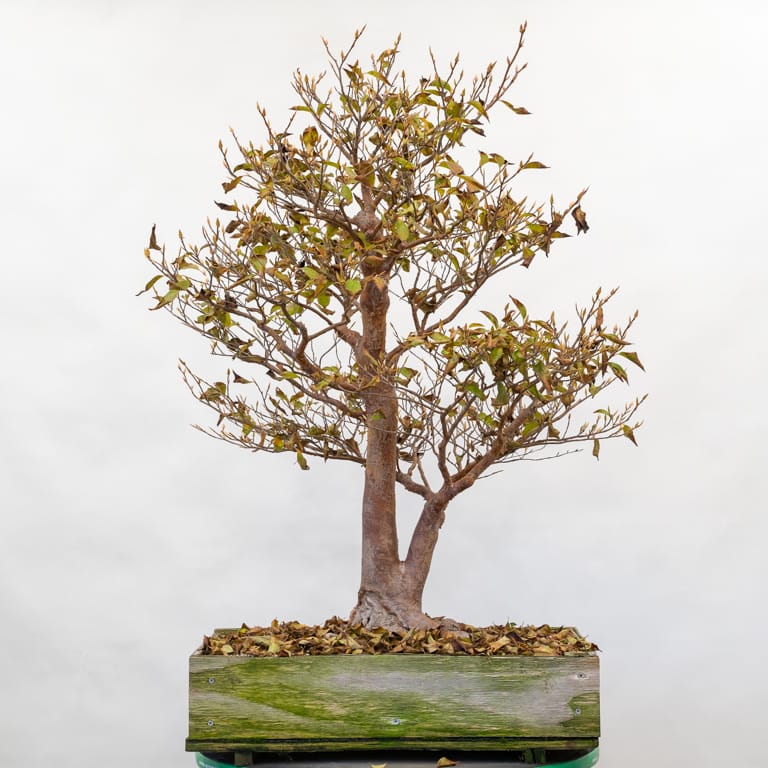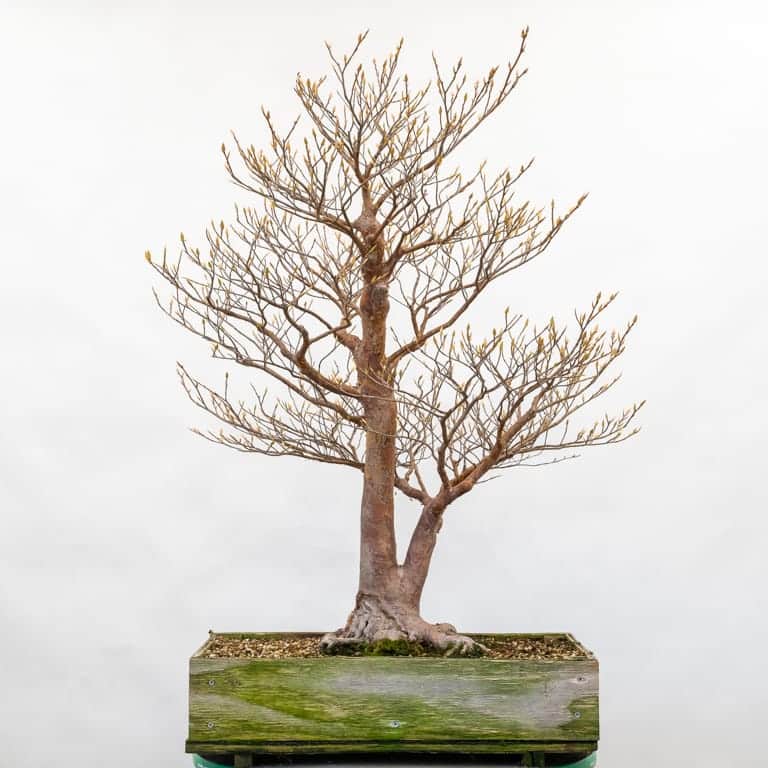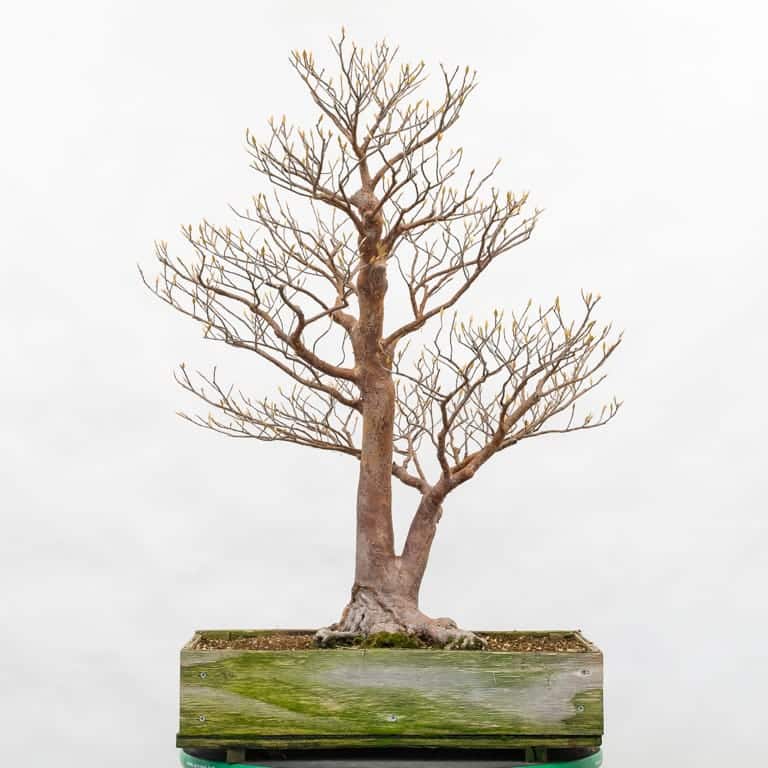As the weather has started to cool where I live, leaves are now falling from some of the deciduous trees in my garden. This is the perfect time for fall pruning.

Stewartia monadelpha
I first remove the dead leaves so I can get a better view of the branches.

After removing the leaves
With a refined tree like this, I make two kinds of cuts. I reduce long shoots to maintain the tree’s silhouette, and I remove shoots that grow in awkward directions.
When I’m working on the latter, I take a few steps back from the tree to better focus on crossing branches that interrupt the flow upward and outward from the trunk.

After light cutback – 33″
I’m keeping the tree relatively full as I plan to either layer or graft roots on the lower part of the trunk in the next one-to-two years. For these operations to work well, the tree must be growing vigorously, and the extra branches and large wooden box both help with this.
Subscribe to Bonsai Tonight
New Posts Delivered Every Tuesday and Friday
Lars says
Hi Jonas, thanks for sharing another beautiful tree. What are your thoughts about the crossing branch on the back from the smaller secondary trunk. I’m assuming it is there to give depth to the composition, but it does catch my eye at least.
Lars
Jonas Dupuich says
Great question Lars – that’s my biggest question about the tree as well. The second trunk also serves as a branch which creates some awkwardness. I plan to reduce it to give the second trunk a more upright form in the future but have hesitated as it provides depth, as you noted, and reduces the distance from the pot the the first branches on the left side. It’s currently too long on the left side so I’ll likely make a few cuts there during the next growing season.
Lars says
Perhaps the first branch on the main trunk which looks like it is growing out of the back could be pulled down a little bit further to compensate if you remove the secondary trunk branch.
Jonas Dupuich says
I have some flexibility with lowering branches, but want to maintain the relatively consistent angles. One option might be to have the branch start upward and then peel outward half-way out. I could definitely do that with the first branch on the right side too – thanks for the suggestion!
Alex Chappelear says
Do all Stewartia species not like their roots being messed with? I’m wondering why I have never seen a Stewartia pseudocamelia bonsai
Jonas Dupuich says
Thanks for the question Alex! Stewartia have fine roots but grow well as bonsai when they get enough water. I’ve seen pseudocamelia as bonsai but they aren’t common. I’d love to see more of them!
Keith R Jarvis says
I am very curious about the root base. It seems like there is a section of shari but I’m not sure based on the lack of closeup. Did this dieback happen when it was under your care, and if so could you describe how you kept it from spreading? I love the shape.
Jonas Dupuich says
Good question Keith – The root dieback happened before I started caring for the tree. My assumption is that the tree dried out which led to the dieback on the trunk and roots. It’s been healing well for the past two years, though I plan to either root graft or air-layer the tree to create a new root-base.